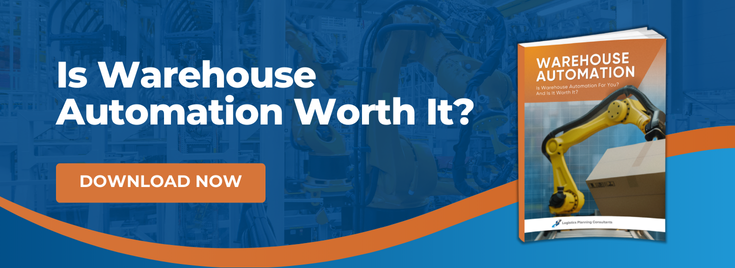
Automation in logistics equipment is growing rapidly in the UK, driven by the need for efficiency, accuracy, and sustainability. However, several key challenges continue to slow down or complicate its adoption—particularly for SMEs, warehouse operators, and 3PL providers.
High Capital Investment
- Automation equipment like robotic arms, conveyor systems, AMRs (autonomous mobile robots), and automated sorters come with significant upfront costs.
- Many companies—especially SMEs—lack the access to finance or ROI certainty to justify the spend.
- Leasing and as-a-service models are helping, but adoption is still uneven.
Workforce Skills Gap
- There is a lack of engineers and technicians skilled in robotics, mechatronics, and warehouse automation systems.
- Training and reskilling programs are limited, meaning companies often face long lead times to implement and maintain automation.
- This challenge is compounded by Brexit and tighter immigration rules, which have further reduced access to technical labour.
Legacy Infrastructure Compatibility
- Many UK warehouses are located in older industrial estates or urban zones where:
- Ceilings are too low
- Layouts are not open-plan
- Floor loads can’t support new machinery
- Retrofitting older warehouses with automation tech can be expensive or technically infeasible.
Integration Complexity
- Integrating new automation with existing ERP, WMS, and TMS platforms often requires bespoke development.
- Many automation systems are still not plug-and-play, and middleware solutions can be costly or limited in flexibility.
Energy and Infrastructure Demands
- Automated systems require stable power supplies, backup generators, and cooling—particularly for high-throughput conveyor or robotics systems.
- This can lead to infrastructure upgrades that add hidden costs and planning delays.
Regulatory and Safety Hurdles
- Compliance with UK Health and Safety Executive (HSE) regulations can slow down automation deployment, especially when humans and robots work in shared spaces.
- Automated guided vehicles (AGVs) and robotic arms must meet strict CE/UKCA standards and may require additional risk assessments.
Change Management Resistance
- Employees and managers may be resistant to automation due to fears over job loss, disruption to workflows, or unfamiliar technology.
- Without clear communication and retraining, adoption can fail—even if the technology itself works well.
Cybersecurity Risks
- Internet-connected automation systems (IoT, cloud-managed robots, etc.) introduce new cybersecurity vulnerabilities.
- Many logistics operators lack the in-house expertise to protect systems from hacking or data breaches.
Uncertain ROI and Payback Period
- The full benefits of automation—like labour savings or throughput gains—can take years to materialise.
- ROI is especially hard to predict in volatile sectors (like retail or ecommerce) where demand fluctuates rapidly.
While automation in logistics equipment offers clear benefits, UK businesses face real challenges—financial, infrastructural, technical, and regulatory. Addressing these barriers will require better funding access, reskilling initiatives, modular tech designs, and stronger support from industry bodies and government.
If you are considering adding automation into your operation, LPC can guide you to the most appropriate systems, conceptualise the requirements and provide budget costs against the schemes. Get in touch with the team today.



